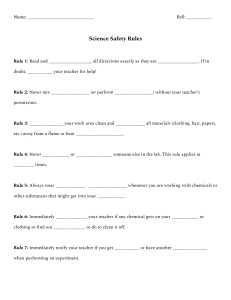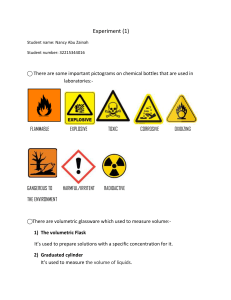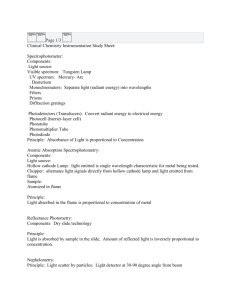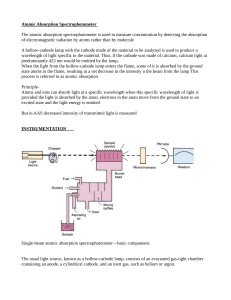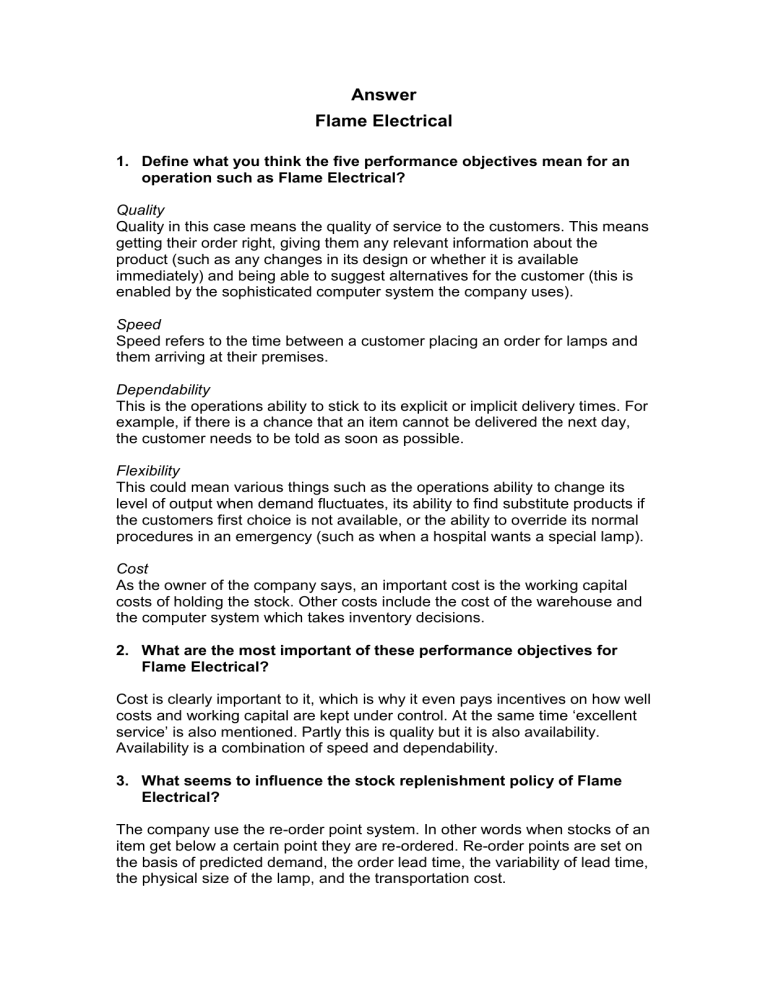
Answer Flame Electrical 1. Define what you think the five performance objectives mean for an operation such as Flame Electrical? Quality Quality in this case means the quality of service to the customers. This means getting their order right, giving them any relevant information about the product (such as any changes in its design or whether it is available immediately) and being able to suggest alternatives for the customer (this is enabled by the sophisticated computer system the company uses). Speed Speed refers to the time between a customer placing an order for lamps and them arriving at their premises. Dependability This is the operations ability to stick to its explicit or implicit delivery times. For example, if there is a chance that an item cannot be delivered the next day, the customer needs to be told as soon as possible. Flexibility This could mean various things such as the operations ability to change its level of output when demand fluctuates, its ability to find substitute products if the customers first choice is not available, or the ability to override its normal procedures in an emergency (such as when a hospital wants a special lamp). Cost As the owner of the company says, an important cost is the working capital costs of holding the stock. Other costs include the cost of the warehouse and the computer system which takes inventory decisions. 2. What are the most important of these performance objectives for Flame Electrical? Cost is clearly important to it, which is why it even pays incentives on how well costs and working capital are kept under control. At the same time ‘excellent service’ is also mentioned. Partly this is quality but it is also availability. Availability is a combination of speed and dependability. 3. What seems to influence the stock replenishment policy of Flame Electrical? The company use the re-order point system. In other words when stocks of an item get below a certain point they are re-ordered. Re-order points are set on the basis of predicted demand, the order lead time, the variability of lead time, the physical size of the lamp, and the transportation cost. 4. How does this differ from conventional economic order quantity theory? The main departure from conventional EOQ theory is the influence of the ‘container load’. Shipping items where the total load is less than a full container is relatively expensive. Thus, if the theoretical EOQ is slightly less than a full container load, the order quantity would be possibly increased to fill the whole container.
